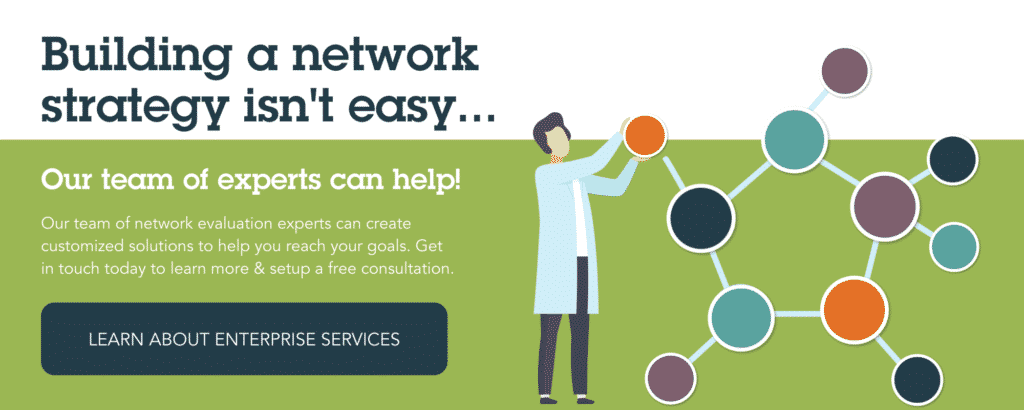Using Network Analysis to Tell Your Network’s Story

Using data to enhance a network’s story highlights the impact of collaboration amongst community members sharing a common goal. Networks can use data to demonstrate to partners, stakeholders, and funders how the quality of their partnerships are progressing over time and why working together is making tangible change. Networks can also engage in strategic network management by using data to develop action steps and inform decision making. A network story will have the same three critical aspects as writing as any other story. First, a likeable character, second, something at stake, and third, a resolution. Here is more advice for using data to tell your network’s story.
Start with your Hero
When you write your network story you will introduce the likable character, the hero. This sets the context for the story. Think about the background of your network. Why did it form? Who are the key players involved? What is the current network strategy, and what would the ideal network look like? Utilize data to show the strength of network partnerships and see who emerges as key players (central to the network). In this part of the story you will explain the current realities of the network and incorporate data to demonstrate your network’s impact. You can highlight contributions, outcomes and perceptions of success, value and trust reported by members.
What’s at Stake?
Once the likeable character is introduced the story moves to what’s at stake. For your network story, this is what is at stake if members do not work together. For example, say the network is working on improving food insecurity in the community so children have equal food access. There is a lot at stake for the community, and for each child within it, if the network does not achieve its goals and work together toward their common mission. In this part of the story the network can utilize data showcasing the value of the network to the community. For instance, data collected around how members formed partnerships emphasize that partnerships would not have formed without the network intervention, program, etc. By gleaning and leveraging insight from their data, networks can attribute the growth of partnerships to how it is accomplishing its objectives.
End with some Resolution
And finally, every story ends with a resolution, and for a network story, this is where you can take a point of view about your data to form action steps that guide the network’s strategy moving forward. I recently heard a podcast featuring Nancy Duarte and she talked about how, from a data point of view, data is merely a structural device to help decision making and inspire action. Nancy discussed moving from being a “data explorer” (showing charts/graphs) to a “data explainer,” a trusted advisor. You do this first by forming a point of view about the data. Then, you decide the next action steps based on what is at stake.
For example, the data explainer might suggest they reduce the amount of meetings members are required to attend. This will increase the strategic intention of adding new members. It will also help increase value and trust among members that may otherwise burn out, preventing the network from achieving its goals. The network story can also include data to show how close (or far) away the current state of the network is to reaching its ideal state. It can also include what specific actions are needed to move the network closer to their ideal state
Using Data to Tell Your Network’s Story
Next time you collect data on your network, think about how you can use that data to tell a story. Consider how you can share it with funders, stakeholders, and the community. Think about which metrics can illustrate the story or guide you towards discovering what you want to say. Data becomes actionable when you wrap it within the context of a story and can influence decision making. Nancy finished the podcast quoting her TED Talk saying: “The future is not a place you go, it’s a place you invent. And the same with data, the actions you do today will create your future data.”

About the Author: Alex Derr, M.P.A.
Director of Marketing & Communications
Alex joined VNL in 2017, originally supporting our events. He now helps manages our communications and marketing strategy and content development work. Alex creates blogs, infographics, reports, and other content while managing our web and social media presence. He also runs our email marketing campaigns, tracks analytics, and conducts market research to drive our strategy. He supports our entire team with copywriting, graphic design and research, and helps with events, webinars, demos, and other online learning. When he isn’t at work Alex spends his time climbing 14ers (30 done, 28 to go!) and blogging on his own website, The Next Summit Blog.





